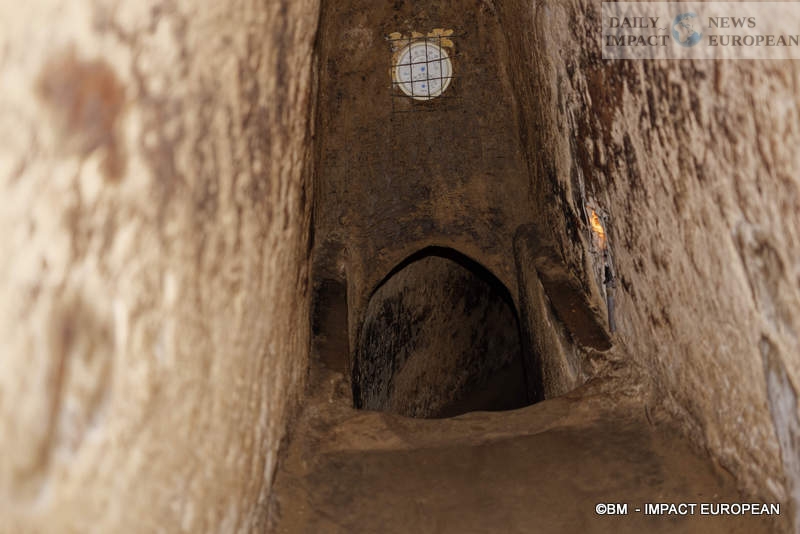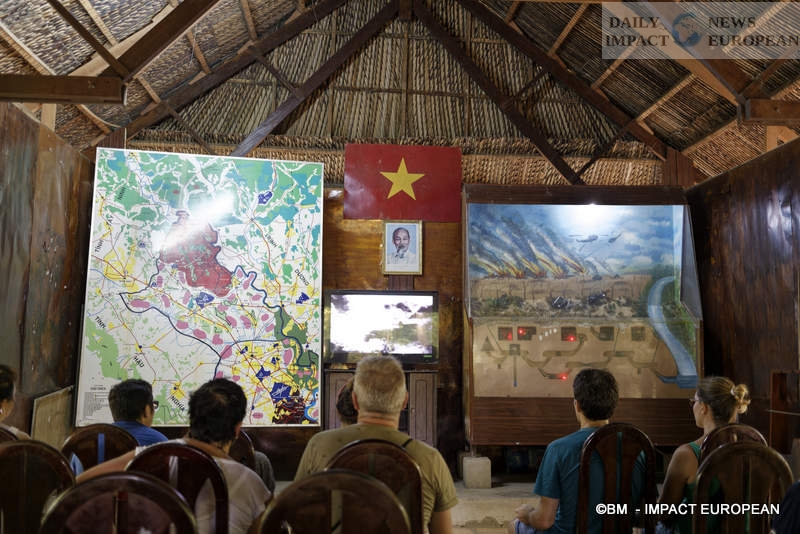Located 70 kilometers northwest of the center of Ho Chi Minh City in Vietnam, the Cù Chi Tunnels, one of the 5 suburban districts of the capital, are a system of underground tunnels of more than 250 km on several levels, going to the Cambodian border.
This network of tunnels played an important role during the Indochina wars and then that against the Americans, serving as caches during the fighting but also as communication routes, supplies, food reserves, etc.
History of the Cu Chi Tunnels
The Cù Chi tunnels were built from the period 1946-1948, when revolutionaries and villagers decided to build a network of tunnels at the gates of Saigon, currently Ho Chi Minh City, capital of Cochin China under the domination French colonial. This construction of underground fortifications was built by hand by the popular militia, who had to remain discreet so as not to arouse the suspicions of the colonial authorities.
Originally, camouflaged in the tropical jungle, the tunnels were only about twenty kilometers long, allowing logistical support to Vietminh fighters established in southern Vietnam and being able to communicate between villages.
In the 1960s, the development of the tunnels allowed the United States to intensify its military presence in Vietnam to support the Diem regime.
The role of tunnels
The site of the tunnels was chosen for its strategic proximity to Saigon but also because of the topography of the place: the soil characterized by a hard and red earth that is difficult enough to dig but soft enough to create an underground network capable of withstanding the weather and external attacks.
The Vietcong, communist armed forces of the South Vietnam Liberation Front aided by the USSR and China, which fought against the Republic of Vietnam and the United States during the Vietnam War, helped the peasants to dig a network of thin galleries serving semi-buried rooms and deeper cavities. At the height of the war, there were 16,000 people present in the tunnels over the 250 km spread over the 3 levels. The first is 3 m from the ground, the second 6 m and the deepest 12 m.
The tunnels were a veritable underground city, one of the ending points of which was the Ho Chi Minh trail. In addition to weapons caches, there were hospitals, schools, meeting rooms, dormitories, kitchens, etc., tiny entrance hatches resembling animal burrows, were camouflaged by foliage, concealed in pigsties or in peasant houses. If discovered by American soldiers, they were booby-trapped crudely but effectively. They were called « cop traps » like nail boards. The tunnels also had a ventilation system that generated air for the thousands of people living there and to extract the fumes from the kitchens.
Having played a key role in the Vietnam War, the tunnels were a base for several military campaigns including the Tet offensive on Saigon. Declared an « overkill zone » by the Americans, they had become a real nightmare for the American army, which failed to destroy them despite bombardments, napalm or specialized commandos called « tunnel rats ».
Visit of the tunnels
The visit to the tunnels, classified as a special national vestige, is done on a part converted into a commemorative park of the Vietnam War.
The network is made up of interconnected tunnels, extended to many places including 6 communes north of the Cù Chi district, becoming a place of refuge and mutual aid in combat, allowing movement between villages (each of them having its tunnel). The site named « Terre d’acier » is a way to learn more about the history of Vietnam.
A gate depicting the entrance to a Vietnamese communal temple greets visitors in front of the Memorial Temple of Sacrificed Fighters in Saigon-Gia Dinh during the Wars of Resistance. We are then left face open.
The start of the tunnel tour is punctuated by a documentary film about the struggle of the local people and the plan of the tunnels. Only a few sections were open to the public with lights on and the passage widened in stifling heat. You have to walk slowly and sometimes even crawl on the ground to see the tunnels appear, a real underground city. The mazes of the network are equivalent in size to the Paris metro.
Copyright ©2023 IMPACT EUROPEAN
Copyright ©2023 IMPACT EUROPEAN. All rights reserved.
Views: 0






















Plus d'histoires
Agricultural crisis: farmers bring protests to Paris over EU–Mercosur deal
In Paris, Ukraine and Its Allies Seal Security Guarantees for a Lasting Peace
Arrest of Nicolás Maduro: U.S. Justification, Global Reactions, and Accusations of Double Standards in International Law